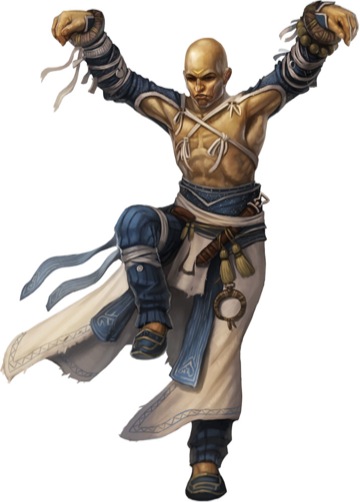As many of you are probably well aware, we have had a number of update documents drop in the past few weeks, correcting a wide array of issues with some of our rulebooks. Seeing that some of these have caused some controversy among players and GMs alike, I thought I would take a moment to talk about the process of creating these documents and give you all some insight on how we decide on the changes made to the game.
No book is perfect. It's an unfortunate reality of the publishing industry. Despite all of our best efforts and countless hours spent poring over proof copies and making corrections, every time we send a book to the printer, it is with the nagging knowledge that there are at least a few mistakes lurking in its pages. Almost without fail, we spot one within a week of getting the first printed copies shipped to our office, well after it is possible for us to fix it. At this point, the first internal correction file is made. As the staff here at Paizo starts using the book, we usually find a few more, and the file grows. Then the book ships out to the public and the questions begin in earnest.
After that point, we primarily rely on the FAQ system and forum threads to point out errors in our books that need to be addressed. When people on the forums notice problems, post threads, and click the FAQ button, we get notified through our system. About once per week we take a look at some of the most pressing issues, answering them as needed and noting many of them in our corrections file.
Finally, when it comes time for us to actually assemble the updates document that you see for each printing of our books, we get together as a team to discuss each issue. While many of the problems are straightforward mistakes that are easy to fix, some require us to rework a rule or make an adjudication on how it actually works in play. These can be contentious issues, both on the forums and internally, but we are always trying to do what is in the best interest of the game. Which brings me around to the most recent update document that is releasing today, making more corrections to Ultimate Combat.
And the Crane Wing feat.
Many of you might remember the conflict over this feat when Ultimate Combat was first released. We felt it was just too good for a heavily defensive build, so when the second printing of the book was released, we made changes to bring it more inline. Some people on the forums let us know that they felt we went too far in "nerfing" the feat and at the time, we said that we would keep an eye on it and see if it required further adjustment.
As it turns out, the feat did need some work, so we changed it so that it provides a +4 bonus to AC until you are missed by 4 or less (at which point it turns off until the start of your next turn). You can still use it to deflect an attack when taking the total defense action. This is an improvement and one that we hope makes the feat a more viable choice.
Of course, this is only one of a number of changes we made to various rules in Ultimate Combat. There were changes to the Musket Master and Pistolero archetypes, removing an ability that allowed them to ignore misfires at 13th level and double-barreled guns saw a change to balance them as well. The Myrmidarch and Titan Mauler both saw changes that strengthened them, allowing them to work better as originally intended, while the Master of Many Styles was altered a bit to make it more rewarding to those that stuck with it, as opposed to just dipping into the class for quick benefits. You can download the appropriate update document below, or from the Free Downloads or product page.
- First Printing to Third Printing (v1.1)—Download (2.3MB zip/PDF)
- Second Printing to Third Printing (v2.0)—Download (2.3MB zip/PDF)
The process of updating our books is never simple and it is a job we take very seriously. We know that many of you are invested in these rules and the characters that rely upon them. Hopefully this gives you a little bit of a better understanding about the process of updates. If you have any thoughts or comments about the most recent Ultimate Combat update, please post them in this thread (as opposed to making a bunch of individual threads) and we will try to answer your questions.
Jason Bulmahn
Lead Designer
